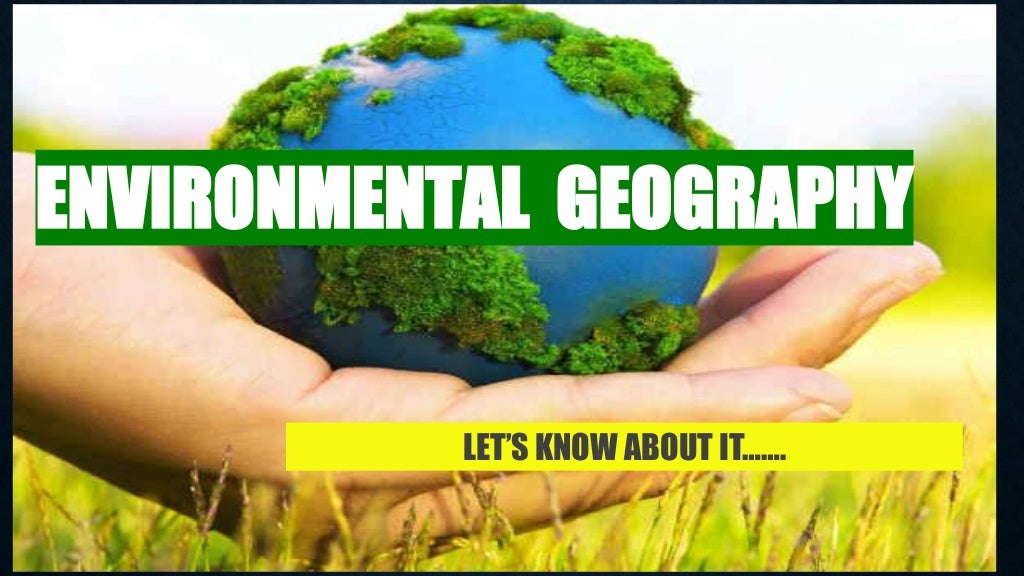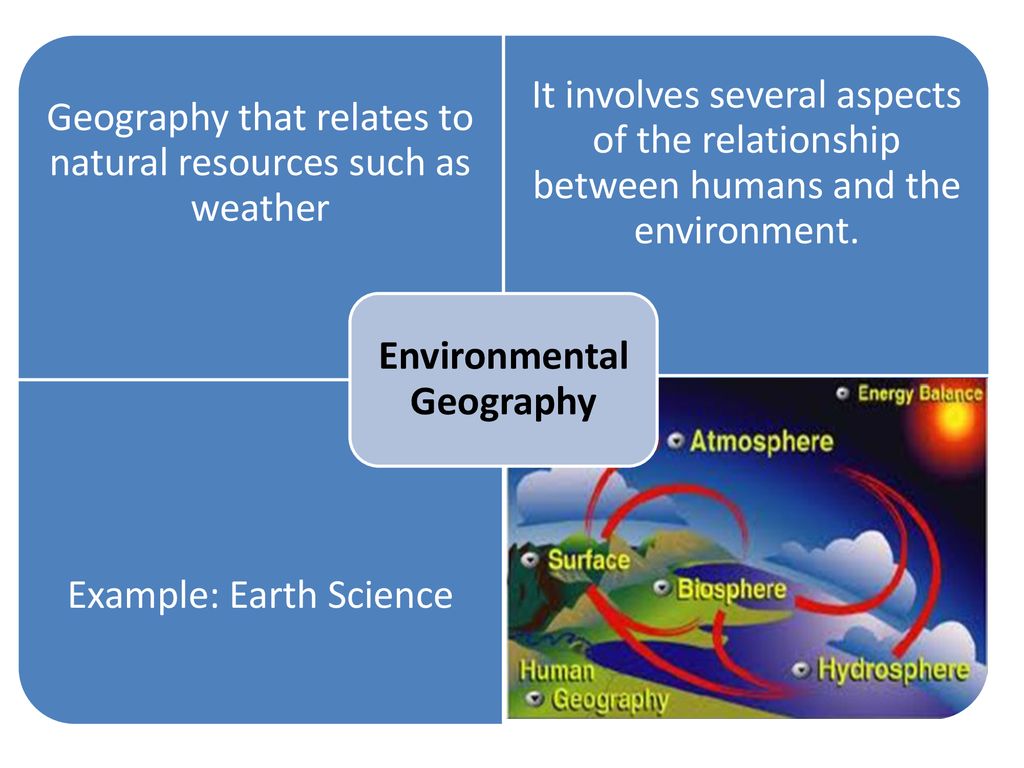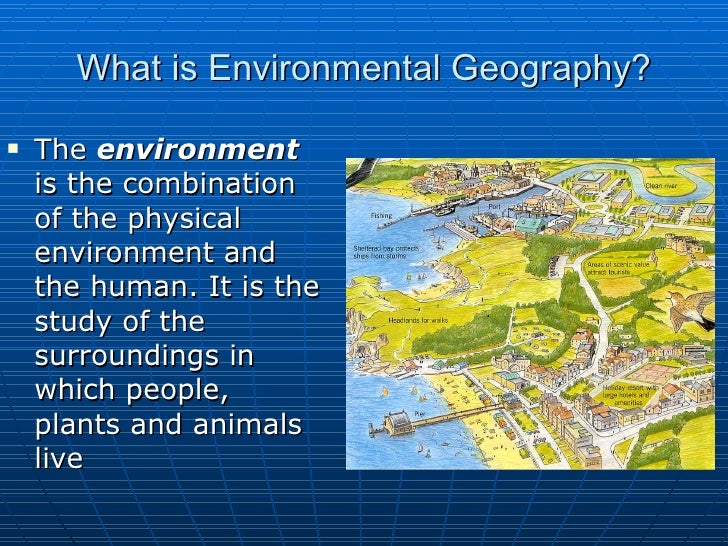Environmental geography is a fascinating field that examines the intricate relationships between humans and the natural environment. As the world faces increasing environmental challenges such as climate change, deforestation, and pollution, understanding environmental geography becomes more critical. By studying how different geographic factors influence ecosystems and human activities, we gain valuable insights into how we can create sustainable solutions for the future.
But how many types of environmental geography are there, and what do they entail?

What is Environmental Geography?
Environmental geography is a subfield of geography that bridges the gap between physical geography (which focuses on natural processes and landscapes) and human geography (which looks at human populations, cultures, and activities). It studies the interaction between the physical environment and human societies, understanding how human activities influence the earth’s systems and vice versa.
Definition and Scope
Environmental geography focuses on analyzing natural landscapes, ecosystems, and human societies. It considers how human activities such as agriculture, urbanization, and industrialization affect the environment, and how changes in natural systems (e.g., climate, natural disasters) impact human populations. Environmental geography is interdisciplinary in nature, often combining elements of biology, geology, sociology, and political science to provide a holistic view of the challenges and opportunities that arise from these interactions.
Historical Context
Environmental geography as a discipline developed during the mid-20th century, when scholars began to realize the profound impact that humans were having on the environment. It was recognized that human and physical geography were intertwined and could not be studied in isolation. As environmental concerns like pollution and biodiversity loss grew, the need for a comprehensive understanding of these issues became more urgent.
The Interdisciplinary Nature of Environmental Geography
One of the most critical aspects of environmental geography is its interdisciplinary nature. For example:
- Physical geography helps us understand the natural processes shaping the environment.
- Human geography shows us how human behavior and society influence these natural systems.
- Environmental science brings in ecological and biological insights into how ecosystems operate and change.
Why Is Environmental Geography Important?
Understanding environmental geography allows us to grasp the complexities of global environmental challenges. Here are some reasons why this field is essential:
- Human-Environment Interaction: It helps us understand the long-term effects of human activities on ecosystems and global climate patterns.
- Policy Development: Environmental geography informs environmental policies and regulations that aim to protect natural resources.
- Sustainable Solutions: By studying environmental geography, we can create strategies that promote sustainability, ensuring that future generations inherit a livable planet.
Case Study: Deforestation in the Amazon
Deforestation in the Amazon rainforest provides an excellent example of environmental geography in action. The destruction of large portions of the forest for agriculture and logging has not only impacted biodiversity but has also influenced global climate patterns. Studies have shown that deforestation in the Amazon contributes to increased carbon emissions, accelerating global warming. By examining both the human drivers (agricultural expansion, illegal logging) and the physical impacts (loss of biodiversity, changes in rainfall patterns), environmental geography provides a comprehensive view of this issue.

Types of Environmental Geography
Environmental geography is a broad field encompassing multiple sub-disciplines that examine different aspects of the human-environment relationship. Each type of environmental geography focuses on unique factors that help us understand how natural and human systems interact. Below, we explore the main types of environmental geography in-depth:
Physical Environmental Geography
Definition and Scope
Physical environmental geography is primarily concerned with understanding natural processes and landscapes. This branch of geography examines the earth’s physical features, such as landforms, climate systems, water bodies, and ecosystems. By studying these natural components, physical environmental geography helps us comprehend how the natural environment operates and evolves over time.
Key Topics in Physical Environmental Geography
- Climate Systems and Their Global Impact:
Climate systems are among the most critical aspects of physical geography. The study of climate patterns helps us understand global phenomena like El Niño, monsoons, and hurricanes. These systems significantly influence ecosystems, human health, and economies worldwide. - Earth’s Physical Processes:
Physical processes such as volcanism, erosion, and plate tectonics play a crucial role in shaping the earth’s landscape. Environmental geographers study how these processes impact ecosystems and human settlements. For example, the movement of tectonic plates leads to earthquakes and volcanic eruptions, which can reshape entire regions. - Natural Disasters:
Natural disasters such as floods, droughts, and tsunamis are core topics in physical environmental geography. These disasters result from the earth’s natural processes, but their effects are often exacerbated by human activities, such as deforestation and urbanization in vulnerable areas. Geographers assess the risks of these events and their impact on populations.
Importance of Physical Environmental Geography
Physical environmental geography plays a pivotal role in understanding the natural world and its processes. This understanding is essential for:
- Disaster preparedness and mitigation: Knowledge of physical processes helps in predicting natural disasters and planning effective responses.
- Conservation efforts: It enables us to conserve ecosystems and manage natural resources, such as water and soil, sustainably.
Case Study: Rising Sea Levels
One example of how physical environmental geography affects global populations is the study of rising sea levels due to climate change. Melting glaciers and polar ice caps are leading to an increase in sea levels, which threatens coastal cities worldwide. Geographers use satellite data and climate models to predict how much sea levels will rise and which areas are most vulnerable. This data is crucial for planning coastal defenses and creating evacuation strategies.
Human Environmental Geography
Definition and Focus
Human environmental geography examines the ways humans interact with the environment. Unlike physical geography, which focuses on natural processes, human geography is concerned with the social, cultural, and economic activities that influence the environment. It explores how human behaviors—such as industrialization, urbanization, and agriculture—impact natural systems and how environmental changes affect human societies.
Key Topics in Human Environmental Geography
- Impact of Urbanization:
Urbanization significantly alters landscapes, leading to issues like habitat loss, pollution, and increased energy consumption. The growth of cities is a critical topic in human environmental geography, as it requires balancing economic development with sustainable environmental practices. - Agriculture and Land Use:
Human environmental geography also looks at how agricultural practices affect ecosystems. Intensive farming, for instance, often leads to soil degradation, deforestation, and water scarcity. Sustainable farming practices are increasingly studied to minimize environmental impact. - Environmental Policies:
The development and enforcement of environmental policies are closely tied to human environmental geography. These policies aim to regulate human activities to reduce their negative impacts on the environment. Topics such as carbon taxation, pollution control, and sustainable urban planning are examined under this sub-discipline.
Importance of Human Environmental Geography
This type of environmental geography is critical for developing sustainable solutions to global problems. It helps policymakers and urban planners design cities and communities that minimize environmental degradation. Understanding the human role in environmental issues enables societies to adopt more sustainable lifestyles and reduce their ecological footprint.
Case Study: Air Pollution in Urban Centers
Cities like Beijing and Delhi have become infamous for their high levels of air pollution, largely due to rapid urbanization and industrialization. Environmental geographers study these cities to understand the sources of pollution (e.g., vehicle emissions, industrial factories) and their health impacts. This research has led to stricter environmental regulations, such as limiting car usage during high pollution days and promoting clean energy initiatives.

Cultural Environmental Geography
Definition and Focus
Cultural environmental geography examines the relationship between human cultures and their environments. This branch of geography focuses on how cultural practices, belief systems, and social norms shape the way communities interact with the environment. It also looks at how different cultures perceive, use, and manage natural resources, recognizing that these interactions are influenced by a society’s values, traditions, and historical context.
Key Topics in Cultural Environmental Geography
- Traditional Ecological Knowledge (TEK):
Many indigenous cultures have developed deep ecological knowledge through centuries of interaction with their environment. TEK refers to the cumulative body of knowledge, practices, and beliefs passed down through generations, concerning the relationships of living beings with one another and with their environment. This knowledge is critical for conservation efforts and sustainable resource management. - Cultural Practices and Environmental Management:
Different cultures have developed unique ways of managing and using the environment. For example:- Slash-and-burn agriculture practiced by indigenous tribes in the Amazon is a sustainable method when done on a small scale and with long fallow periods.
- Water management systems in ancient civilizations, like the terraced rice paddies of Southeast Asia, demonstrate how human ingenuity can work with the environment to maintain sustainable agricultural practices.
- Cultural Perceptions of Nature and Conservation:
How different cultures perceive nature can influence their approach to environmental conservation. For instance, some cultures view nature as sacred and strive to protect natural landscapes as part of their spiritual beliefs, while others may see nature as a resource to be exploited for economic growth. Environmental geographers study these varying perspectives to understand how they impact conservation efforts.
Importance of Cultural Environmental Geography
Cultural environmental geography is essential for fostering cross-cultural collaboration in addressing environmental issues. By understanding the values and practices of different cultures, geographers can create more inclusive and effective environmental policies. Cultural perspectives can provide valuable insights into sustainable practices, and understanding them can enhance global conservation efforts.
Case Study: Indigenous Stewardship of the Amazon Rainforest
In the Amazon, indigenous groups such as the Kayapo have historically managed vast areas of forest using sustainable practices. Their methods of forest conservation, such as controlled burning and selective harvesting, have maintained biodiversity and prevented large-scale deforestation. These practices have been recognized by international conservation organizations as vital to preserving one of the world’s most important ecosystems. In recent years, there has been increasing recognition of the importance of indigenous land rights and their role in environmental protection.
Political Environmental Geography
Definition and Focus
Political environmental geography analyzes how political institutions, policies, and international agreements shape environmental management and governance. It explores the role of governments, non-governmental organizations (NGOs), and international bodies in addressing environmental issues. This field also investigates how political power dynamics influence the access, use, and control of natural resources.
Key Topics in Political Environmental Geography
- Environmental Policies and Governance:
Political geographers study the creation and enforcement of environmental regulations at local, national, and global levels. Policies such as the Clean Air Act in the U.S. and the Paris Climate Agreement are key examples of how politics intersects with environmental management. The effectiveness of these policies depends on political will, public support, and international cooperation. - Resource Conflicts and Geopolitics:
Access to natural resources like water, oil, and minerals often leads to conflicts between nations or groups. Political environmental geography examines the geopolitics of resource control and the conflicts that arise when resources are scarce or unevenly distributed. For example, disputes over water rights in the Middle East and the Nile River Basin highlight the political tensions surrounding environmental resources. - International Environmental Agreements:
Global environmental challenges, such as climate change, biodiversity loss, and ocean pollution, require international cooperation. Treaties like the Kyoto Protocol and the Montreal Protocol have been instrumental in addressing global environmental issues. Environmental geographers analyze how effective these agreements are and the political challenges they face.
Importance of Political Environmental Geography
Political environmental geography provides insights into how policy and governance can shape environmental outcomes. Understanding the political structures that influence environmental management is crucial for advocating for stronger environmental protection laws and creating policies that are equitable and sustainable. It also sheds light on how power dynamics can either promote or hinder environmental progress.
Case Study: The Paris Agreement and Climate Change
The Paris Agreement, signed in 2015, is a landmark international accord aimed at reducing global greenhouse gas emissions and limiting the global temperature increase to below 2°C above pre-industrial levels. While the agreement represents significant progress in global climate policy, political environmental geographers study the varying levels of commitment from different countries and the challenges in meeting the agreement’s goals. Political factors, such as changes in national leadership, economic priorities, and public opinion, play a major role in determining a country’s climate action plan.

Economic Environmental Geography
Definition and Focus
Economic environmental geography studies the relationships between economic activities and the environment. It looks at how industries, businesses, and economies influence natural resources and environmental systems. This branch of geography also analyzes the economic consequences of environmental degradation and the costs of implementing sustainable practices. It emphasizes the need for balancing economic development with environmental preservation.
Key Topics in Economic Environmental Geography
- The Environmental Impact of Industrial Activities:
Industrial sectors, such as manufacturing, mining, and energy production, have significant environmental impacts. These include pollution, deforestation, and resource depletion. Geographers study how these industries contribute to environmental degradation and explore ways to mitigate their negative effects through cleaner technologies and sustainable practices. - Environmental Economics and Sustainability:
Environmental economics is a key aspect of economic environmental geography. It involves assessing the economic costs and benefits of environmental conservation and degradation. This field introduces concepts such as:- Carbon pricing: A method used to reduce global warming emissions by placing a financial cost on carbon emissions.
- Green taxes: Levies imposed on activities that are harmful to the environment, incentivizing businesses and individuals to adopt more sustainable practices.
- Cap-and-trade systems: Economic policies aimed at limiting carbon emissions while allowing companies to trade emissions permits in a regulated market.
- The Green Economy and Sustainable Development:
As environmental concerns grow, there is a shift towards a green economy that focuses on reducing environmental risks and ecological scarcities. This transition involves promoting industries that are environmentally sustainable, such as renewable energy, eco-tourism, and green infrastructure. Sustainable development, a central theme in economic environmental geography, seeks to meet present economic needs without compromising the ability of future generations to meet their own needs.
Importance of Economic Environmental Geography
Economic environmental geography is crucial in identifying the trade-offs between economic growth and environmental protection. It helps governments, corporations, and communities make informed decisions about resource management and investment in sustainable technologies. Understanding the economic drivers of environmental change is key to creating policies that promote long-term sustainability.
Case Study: The Economics of Renewable Energy
The shift from fossil fuels to renewable energy sources, such as solar and wind power, offers an excellent example of the intersection between economics and environmental geography. Countries that invest in renewable energy technologies are reducing their carbon footprints and creating new job opportunities in green industries. At the same time, the economic challenges of transitioning to cleaner energy, such as the upfront costs of technology and the need for grid infrastructure, are significant factors studied by economic environmental geographers.
Facts and Data:
- According to the International Renewable Energy Agency (IRENA), renewable energy jobs worldwide reached 11.5 million in 2019, with the solar energy sector accounting for the largest share.
- Investments in renewable energy are expected to reach $2.6 trillion by 2030, driving further economic growth in the green economy.
Historical Environmental Geography
Definition and Focus
Historical environmental geography examines how the environment and human interaction with it have changed over time. This branch of geography looks at the historical processes—such as colonization, industrialization, and urbanization—that have shaped both natural landscapes and human societies. By studying the environmental history of a region, geographers can understand the long-term effects of human activities on ecosystems and how past environmental changes continue to influence the present.
Key Topics in Historical Environmental Geography
- Environmental Changes Through Time:
Historical environmental geography often focuses on specific periods of significant environmental change, such as the Industrial Revolution, when the rapid expansion of industries led to widespread pollution and deforestation. Geographers use historical data, maps, and archives to analyze how these changes have altered ecosystems and human settlements over centuries. - Impact of Historical Events on the Environment:
Major historical events, such as wars, colonization, and migrations, have had profound environmental consequences. For example:- The colonization of the Americas led to the introduction of non-native species, changes in land use patterns, and the displacement of indigenous peoples, which drastically altered the environment.
- World War II caused significant environmental damage due to bombing campaigns, deforestation for military purposes, and the expansion of industries to support the war effort.
- Long-Term Ecological Studies:
Historical environmental geography often involves long-term ecological studies, such as paleoclimatology, which looks at climate changes over thousands of years. These studies provide insights into how past climate fluctuations have impacted species and ecosystems, helping scientists predict future environmental changes.
Importance of Historical Environmental Geography
Understanding the historical context of environmental changes is crucial for addressing contemporary environmental challenges. By studying how past societies have managed or mismanaged their environments, we can learn valuable lessons for creating more sustainable futures. Historical environmental geography also helps to identify the legacy effects of environmental degradation, such as soil depletion or loss of biodiversity, which may take centuries to recover.
Case Study: The Dust Bowl in the United States
The Dust Bowl of the 1930s is a well-known example of how historical human activities can have long-lasting environmental impacts. Poor agricultural practices, combined with drought, led to severe soil erosion and the destruction of vast farmlands in the American Midwest. This environmental disaster prompted major changes in land management practices and the establishment of federal soil conservation programs.
Facts and Data:
- During the Dust Bowl, it is estimated that 850 million tons of topsoil were lost, leading to massive agricultural failures and economic hardships for farmers.
- The U.S. government responded by planting 220 million trees to act as windbreaks and stabilize the soil.